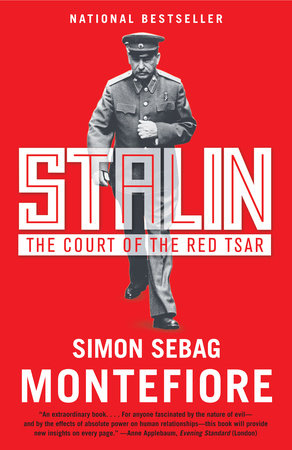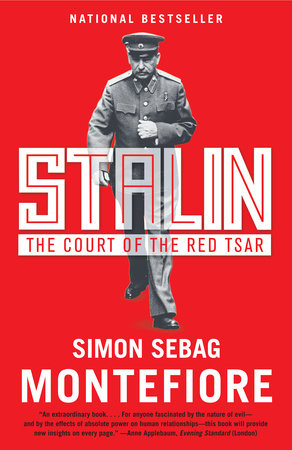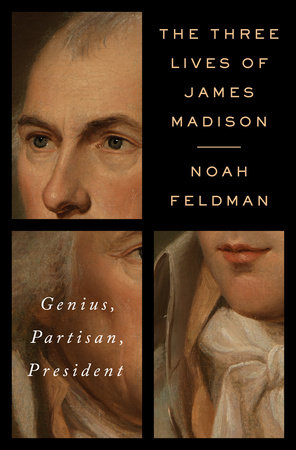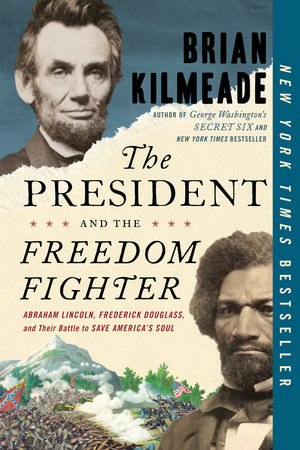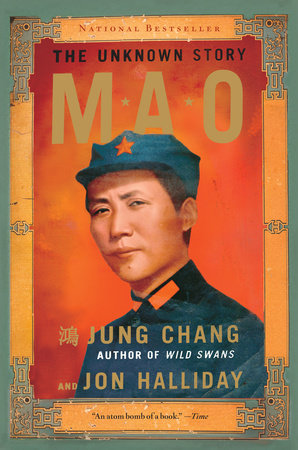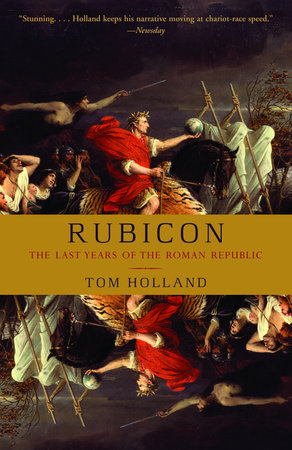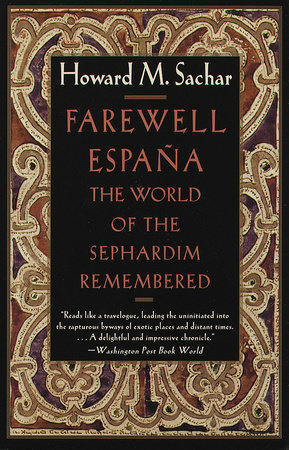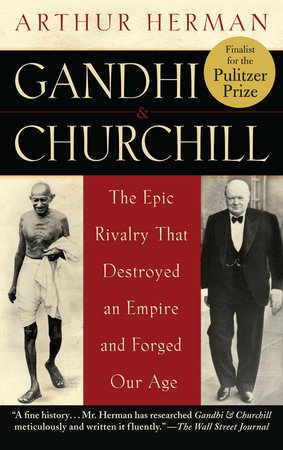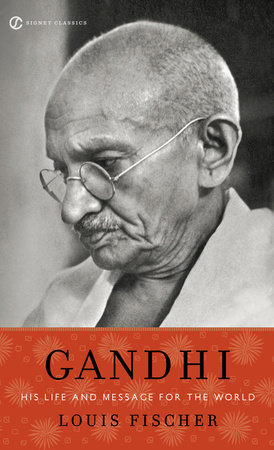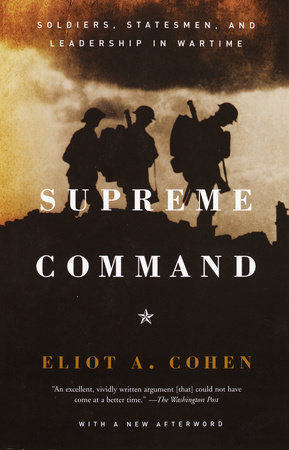A Conversation with Simon Sebag Montefiore
Q: Newly opened archives in Russia allowed you, unlike any previous Stalin biographer, to assemble a shockingly personal portrait of one of the world’s most brutal dictators. What insight can be gained by knowing the intimate details of Stalin’s life and personality?
A: This is a biography of Stalin at his apogee but it is also a chronicle of his imperial court, the story of how he became dictator. It is the story of how his highest magnates ruled with him and how their wives and children survived – an intimate account of life, fear, betrayal, privilege and debauchery, family life and murderous brutality in that extraordinary time. I wanted to answer the questions: how did he really rule? How did they really live? Who was the boy from Georgia who rose to rule the Tsarist Empire? Who was his Himmler, his Goebbels, his Goring? Power fascinates me and this is a story of power, and ruthlessness, and fanaticism – but it also tells how they wrote love-letters, danced, partied, sang, ate, what they read and what movies they watched and what cars they drove, and what pornography they liked. Because all these things became literally fatally important in the politics: people died of gossip at Stalin’s court. The ideology was omnipresent like religion in the middle ages, but the exercise of power was not that different from the courts of Genghiz Khan or Louis XIV or Henry VIII perhaps. I suspected that personal relationships were much more important than dry institutional analysis, yet much of Soviet/Stalinist history had been written in the same impersonal way that the Soviets described themselves. This was partly due to their secrecy and partly due to the Cold War Kremlinology which depersonalized the Soviets.
Q: What did you find in the archives?
A: I was amazingly lucky to find totally new unpublished memoirs and unpublished photographs as well as the accounts of the many eyewitnesses I interviewed myself. I hope some of it may change the way Stalinism is described in the future. Stalin’s own letters and letters to him, the letters and notes amongst the top leaders, and their love letters revealed a completely different world of intimacy and informality, quite different from what we had been told before. It showed that Stalin used charm as well as fear and guile; that there was great intimacy and friendliness amongst the magnates; that he often had to apologize to his leaders, showing that he was not yet dictator; it revealed the humor as well as the horror.
We find him ordering deaths but also being a loving husband, an adulterous flirt with a host of illegitimate children, a movie expert who liked John Wayne films, a songwriter and a fine tenor singer, an intellectual who loved Hemingway, Balzac, the Forsyte Saga and Last of the Mohicans, a teller of jokes, a lover of gardening especially roses. We find behind the steely mask, a highly strung, emotionally damaged, jealous man, a suffocating friend, a harassed husband, loving father, a man for whom everything was political yet whose personal feelings changed history. Above all, it proved that politics at the court of Stalin was not about Politburo meetings but about proximity to the Leader, personal patronage, rivalries and ambitions – and his top henchmen were not grey men without characters but often remarkable and extraordinary in their own right. Though Stalin was most truly exceptional and I hope I show him as less enigmatic, more intimate, no less brutal but more human – and he never ceased to astonish me.
Yes these Soviet grandees were first and foremost Bolshevik fanatics who believed in Marxism like a religion – but politics was even more personal than in a normal system. The vast new archives that are used in the book show how these personal court politics worked and I think it is fascinating. While everything was meant to be political, in fact everything was personal. Therefore the personal, the intimate, the rivalries, everything in the details mattered enormously – and this is not merely gossip but a matter of life and death and power. The new archives and my own interviews prove this and I think this may change the way Stalin is described in the future.
Q: When constructing the biography, did you find it difficult to mesh the personal information you’d uncovered with Stalin’s political life? For instance, a passage about his holiday plans might also mention the starvation of millions of peasants in the countryside.
A: Yes but that is the essence of how real life worked at Stalin’s court and therefore to show how it really happened, I of course did blend in the holidays with the murders, the movies with the intrigues, the poisonings with the dinners, the dancing and the deaths. I really wanted for the first time to create the feeling of the intimate texture of life in this tiny elite of Stalin and his grandees. After torturing their victims all night, they arrived at breakfast with their wives with the speckled blood still on their shirtsleeves. Since as I have explained in the first answer, power was personal, the intimate details played a part in the high politics and therefore in the lives of millions. It is important to understand with the terrible events of history how they became NORMAL, for this explains how these monsters did the impossible - believed in killing millions. The Great Terror, for example, was mostly the result of great historical forces but personality also played a huge role in it. I try to show both these things. I must add that I was so lucky with my materials – not just the archives, but the new memoirs I found and my interviews too – because I was often able to tell a whole day in Stalin’s life with BOTH the political decisions and personal details, such as his daughter’s little loving letters, his gardening, his sore throats — and, in some cases, I even found the photographs of that very day so I could provide both sound and vision as it were. This made this book very thrilling to write.
Q: Contrary to what most of us think, Stalin didn’t rise to power by fear; he rose by charm. He was, you write, “a people person.” Could you give us an example of his charm?
A: Charm was how Stalin built his dictatorship: if he set his mind to charm you, he was irresistible (as Roosevelt and Churchill attested). There are legion examples of this – but a good one is when young Beria, a provincial official, visited Moscow. Stalin invited him to dinner, befriended his young son, sat him on his knee, and when the boy was cold, wrapped him in his own fur coat and asked him endless questions, treating the child as a grownup, sat him at dinner with the leaders and then watched cartoon films with him and when it was bedtime, he put the child to bed himself. When Beria moved to Moscow, Stalin personally handled the move; inspected the Berias’ new flat and decided it was not good enough; found Beria a beautiful mansion, visited it and checked the heating was working and so on. No wonder Beria was devoted to him. This is not a unique example - Stalin was accessible to his officials, sometimes answering the phones himself; he wrote them apologetic and charming letters; he embraced them into his close family, sang with them; he befriended their wives and took a great interest in their children – he was in fact very good with children; and he made them feel the most important people in the world. He personally inspected their homes, personally gave them financial bonuses, and personally wrote out what car – Buick, Cadillac, Rolls – was to go to each family.
Q: But Stalin could, and did, order the torture and murder of top aides and their families if they were unfortunate enough to be considered in any way harmful to the regime. Why didn’t people flee from him?
A: It was very hard to flee because security was so tight by the mid-thirties, but some of them did plan to escape and some tried but got caught. There were defections, but many did not because of the most important fact of all: they BELIEVED in the Party and Bolshevism. And more than that, they believed in Stalin’s charm and decency and fairness.
Q: Politburo wives knew about the mass starvation and murders and still actively supported — believed in — the regime. This doesn’t say much for female humanity.
A: The women were the most fanatical and bloodthirsty of all. Most of the magnates’ wives were in love with Stalin but they also enjoyed the fruits of power and privilege – the cars, the box at the opera, country house life – and of course they also had access to their own haute couture designer who copied the designs of Vogue and Harper’s Bazaar for them!
Q: As part of your research, you interviewed sons and daughters of the regime leaders. How did you find them?
A: Yes I had to find all these forgotten families and it was an amazing detective story that took me from Petersburg to Tbilisi in Georgia and Rostov-on-Don. I used every possible trick, and when they would not see me, I simply rang and visited until they agreed but some were by chance: I once visited Russian Vogue and met a Mikoyan; I rented a flat from Litvinov’s grand daughter; I knew Molotov’s family because a friend lived in their flat; I met Beria’s great-grandson at a dinner party; the publisher of my last book on Prince Potemkin is also a minister in the Putin government and he helped open many doors to these very secret people. In Georgia, I had many friends and when I asked them, they said, "Don’t you know my grandfather" and when I found out who that was, I was amazed: "How come he is still alive?" "Oh he’s 97 and he can still dance and when he has danced for you, he will tell you about Stalin and even show you his memoirs. No one has ever been interested before…."
Q: Were the interviews emotional? How do these people feel about their past?
A: The interviews were often so agonizing that I and the interviewee could not help but weep. When Rykov’s daughter told me how she said goodbye to her father in 1937, I asked "So did you ever see him again?" "Only in my dreams," she replied. When I asked how she survived 20 years in the camps, she replied, "The beauty of nature – and the kindness of ordinary people." Some of the families, such as the Khrushchevs and the Mikoyans, are now very liberal and yes, they are guilty of what their fathers did and it is painful to them. But there are also lots of them who are fascinatingly unchanged and rabidly Stalinist. Beria’s daughter-in-law is still beautiful and her intimate life living with Beria enabled me to bring him to life as a person and not just a monster. Andreyev’s daughter Natasha was typical – she claimed her father was innocent but that very afternoon I found his file in the archives that revealed him as a frenzied mass murderer on a killing spree. But when I questioned her, she turned nasty, saying the West had killed more by AIDS than Stalin and then she said: "Are you an Enemy of the People Simon? My mother had the talent of recognizing Enemies by looking into their eyes and she said I had inherited this gift. Are you an Enemy?" The daughter of Stalin’s secretary Poskrebyshev was most interesting: her mother was shot by Stalin yet in the middle of the interview, after she weepingly told this tale, she claimed to be Stalin’s illegitimate daughter: "Do I remind you of someone?" she asked. All the families were special and could never forget how they were and are touched forever by Stalin – hence my last chapter the epilogue tells their special stories.
Q: Stalin was quite popular with women, often receiving letters with invitations for trysts. Wouldn’t dating Stalin be a little dangerous?
A: I was very lucky to find new material about his mistresses in the 1930s. It is interesting that virtually all the women around him in those days were Jewesses – and that some of these Jewesses became his mistresses, given his later rabid anti-Semitism.
We think of Stalin as a freakish grotesque but to the women around him, he was a good-looking, self-deprecating and flirtatious man of power. And as Kissinger said, power is the greatest aphrodisiac. Yet this does not quite apply to Stalin because he was always very attractive to women: Georgians are the Italians of the Soviet Empire. His golden eyes, black hair, quiet voice made him dashing even as a powerless exile: he was never without a mistress throughout that time and we now have some of his love letters. He stole a girlfriend off Molotov and Sverdlov. During the 1920s and 1930s, Stalin was married but probably had affairs all the time. He was no womanizer, women were not important to him, he was fairly uneasy and crude in his manners to them, but they were drawn to him. But in 1937, this all changed: women did approach him to flirt and ask for their brothers to be freed but Stalin henceforth did become a figure of real fear. More interestingly perhaps, Stalin himself no longer wanted women or trusted them: he feared they would be used against him politically and he preferred a secret life of austere sterility. His housekeeper Valechka became a sort of secret wife but he had been burned by the political and personal dramas of his wife and his mistresses in the 1930s. His private life became so secret it ceased almost to exist.
Q: You report on a lot of sexual degeneracy among the secret police chiefs. Who was the worst?
A: Beria was the Bluebeard of Bolshevism – but also the most intelligent and capable and interesting of Stalin’s magnates. Yet all the secret police chiefs lived such a life of murderous degeneracy because they had access to every luxury and power over life and death. And they were themselves brutalized by their life of torture and murder. Yagoda collected early German porn films and pipes with phalluses and breasts on them. Yezhov was bisexual, very promiscuous and a drunk too. His charming Jewish wife was also promiscuous and loved to sleep with famous writers: she became the Black Widow of Stalin’s court, bringing death to all her lovers, especially the greatest of all, the writer Isaac Babel. But Beria was the worst: super intelligent and amazingly capable, he was a sadist, a torturer, a pervert, and a rapist. He enjoyed torturing people to death; he raped women who came to ask his help and later even kidnapped them off the streets. He caught VD and had many illegitimate children. Now bones have been found under the house in Moscow, now the Tunisian Embassy. A true monster – and yet his daughter-in-law also reveals the human man because she lived with him for many years. When a woman resisted him, his bodyguard handed her the usual bouquet but Beria spat: "That’s not a bouquet. It’s a wreath!" She was arrested soon afterwards.
Q: When he wasn’t running the state or ruminating over his health (the Politburo seemed overrun with hypochondriacs), what did Stalin do in is private time to relax?
A: Gardening, movies and above all reading were his favorites. He was such a good tenor singer that he could have been a professional singer. He loved gardening and even weeded himself and sometimes he made his guests help him. He liked presenting people with roses. He was obsessed with the cinema and loved the films of John Ford, cowboy films, and by the end of this life, he virtually ran the USSR from his private cinema. He was also the Soviet film industry’s supreme censor and had to view all movies: he sometimes wrote the words to their songs, vetted their scripts, coined their titles and in Eisenstein’s movie Ivan the Terrible, he gave a personal master class on how to present him. When he grumbled that Ivan kissed too much, kissing was almost banned in all Soviet movies. He never stopped reading and was probably one of the best read Russian leaders between Catherine the Great and Putin – yet he was self-educated. He read novels such as Balzac and Zola and Last of the Mohicans but he lived for history and read about Ancient Greece, Bismarck and Talleyrand, and Ivan the Terrible who was his hero. He made notes in all his books and I have been through his library in the archive. "Even though I am 70, I never stop studying," he said.
Q: Taking together all the details of Stalin’s life and personality, can you pinpoint an event or offer a theory explaining what could have happened that made him capable of devaluing human life to the degree that he did?
A: I think psychobabble is a great danger in a biographer. Even when a psychiatrist spends hours with a patient, they rarely penetrate to the real person and we historians do not even have that sort of access. But now with all this new material, we really know a lot about Stalin. His childhood was violent, insecure, poverty-stricken, his father and mother beat him – yet his mother gave him great belief in his unique power. He despised family as a result. His childhood was also priest-ridden and religious – so he embraced Bolshevism with religious indeed quasi-Islamic fanaticism and Bolshevism was a creed of bloodletting. Many of the top Bolsheviks came from religious homes but most had happier families than Stalin and YET ALL OF THEM BELIEVED IN THE RANDOM KILLING OF MILLIONS. So much of this is not to be found in their abnormality but in their fanaticism. Or perhaps by chance, there were many psychopaths at the top of the Bolshevik State?
Q: You visited all of Stalin’s houses, including those in the forbidden war torn republic of Abkhazia. How did find them?
A: Again, this was a great detective adventure story that I relished. I had to get the help of the bandit republic of Abkhazia, the UN Peacekeepers, and the top experts in Soukhoumi and then I set off via UN helicopter, then car into Abkhazia to find these houses. No historian had been to all of them but when I asked if anyone else had seen them, the local expert said: "Yes there was this Arab VIP in the 1970s." "Who?" "His name was Saddam Hussein," she replied.
Q: So there are parallels to be drawn between Stalin and contemporary dictators like Saddam Hussein?
A: Saddam Hussein was obsessed with Stalin and there were many coincidental and deliberate parallels between them. Soon after Saddam Hussein became President of Iraq in 1979, a Kurdish politician named Dr. Mahmoud Othman was invited to meet him at dawn in his palace. When he arrived the Kurd was shown into Saddam’s tiny private office where the President worked until the early hours before bedding down on a military iron cot in the corner: "the rest of the office," observed Othman, "was nothing but a small library full of books about one man, Stalin. One could say he went to bed with the Russian dictator."
Othman is far from the only source who has witnessed Saddam’s private shrine to Stalin. The best biographers of Saddam, such as Said Aburish, who cites this story, agree that his obsession with the Soviet dictator pervades his career. This is much more than a simplistic parallel but the deliberate reverence of a pupil for his historical master and prototype. Saddam’s Baathist Party, a hostile branch of which also rules Syria, is an Arabist pastiche on post-war Stalinism. Saddam’s life resembles and parodies Stalin’s. They were born a few hundred miles apart, Stalin in Gori, Georgia in 1879; Saddam in Tikriti northern Iraq probably in 1937, the very year of Stalin’s Great Terror. Both were labeled illegitimate, had weak feckless father figures, powerful ambitious mothers. Both were helped forward by clever patrons, Saddam’s uncle Khairallah Tulfah, and Stalin’s godfather, Yakob Egnatashvili.
"When we take over the government," Saddam said frequently, "I’ll turn this country into a Stalinist State." When the Baathists took power in 1968, Saddam played the similar role of brutal troubleshooter to his political master, General al-Bakr as Stalin did to Lenin. Like Stalin, he initially moved behind the scenes. After ten years, he emerged in 1979 as President just as Stalin, after 19 years as General-Secretary, became Premier in 1941.
When President Kim Il-Jong recently visited Moscow on a surreal train journey, he proudly informed Vladimir Putin that he was traveling in the armored train given to his father as a present by Stalin.
Q: Did the Russians help you in your research? Have the rights to your book been sold in Russia?
A: Interesting question: as I said earlier, I was helped in this project by Government Ministers and oligarchs in Russia as well as by the families of the Stalinist grandees and many wonderful people in the archives. But my book deliberately indicts not only Stalin but many others with guilt for the murders and I think many in Russia will prefer just to bury the past and blame it all on Stalin and Beria. My last book on Prince Potemkin was very popular amongst Russians and has just been published there. STALIN has just been sold there as well and will be published in the next year or so.
Q: For all his nastiness, Stalin managed to stay in power for 30 years. Are there any lessons of leadership to be taken from him?
A: Oh yes. The case of Stalin would be a brilliant basis for a management guide taught in business schools! Up until 1937,when he began to use naked fear as a ploy, he was a superb manipulator and manager, using every possible weapon in the manager’s arsenal of personnel skills – charm, patience, flattery, bribery, firmness, temper, apology, U-turns and sudden retreats. After 1937, that suddenly changed until 1941/2 when the huge defeats of Soviet forces by Hitler finally convinced the overconfident warlord Stalin that he had to rule again by a sort of collegial system. After his collapse in late June 1941, he began to listen to his magnates again; in 1942, he started to rely on the advice of his outstanding generals Marshals Zhukov and Vasilevsky. But once he was rewarded with victory, he returned to fear and manipulation again, methods that he used progressively more as he declined towards his death.
Q: Which other writers and historians do you admire?
A: I admire the great scholars of 20th century Russia, most of them working in America today – especially Richard Pipes, Robert Tucker and Robert Conquest, as well as the great popular historians such as Robert Massie who has written so much on Russia. My dream with this book is to combine their qualities – to write a readable and interesting book that also used new archival and other materials and was written to a scholarly standard. I want this to be read by experts but also by people who have never read a book on Stalin before. I read those great scholars when I was a child and I longed to join them in writing about Stalinist Russia. Robert Conquest helped me with this book and his Great Terror was the first book I read on the subject. Then I moved on to other greats, such as Pipes and Tucker, Sheila Fitzpatrick and so on. But I also admire the most recent biography of Hitler by Ian Kershaw that in some ways inspired my book because it showed Hitler as a person and how he ruled as well as lived using new materials – it set a very high standard too. I admire modern writers on Russia too, such as David Remnick’s Lenin’s Tomb – and historians who have brought WWII to life such as David McCullough and Stephen Ambrose for they have made history exciting for readers who are not experts and that is the highest skill I believe.
Q: There are a lot of institutions in America, particularly hospitals, named ‘Montefiore.’ Your family history is interesting. Could you tell us a bit about it?
A: Sir Moses Montefiore was a remarkable man - vastly rich, partner of the Rothschilds, founder of the new City of Jerusalem (hence the Montefiore Quarter and Windmill in Israel), friend of Queen Victoria, the first Jewish baronet, a patriotic Englishman, proud of his Jewishness. He was born in Italy in the 18th century and came to London where he became a young financier and brother-in-law of NM Rothschild. The two brothers-in-law lived together and did business together making a great fortune. When Montefiore was 40 he retired from business and became an international envoy of the Queen and her Prime Ministers, especially Disraeli and Palmerston, visiting the leaders of the world to fight for Jewish and British interests and he became a tremendous philanthropist. He visited Tsar Nicholas I and Alexander II to fight for Jewish rights; he visited Jerusalem six times. It was an amazing life: he had no children and his heir was his nephew Sir Joseph Sebag-Montefiore, who was a Moroccan banker: my family is descended from him so I am of Italian-Moroccan Jewish descent…
Q: What’s next for you?
A: I am still very busy on Stalin because it comes out this year not only in America but also in Sweden, Holland and about ten other countries and I am visiting some of them and I am still promoting it in England. Of course I want to write a third history book about Russia so that I will have completed a trilogy – Prince Potemkin, Joseph Stalin and …… I remain fascinated by the 20th century but I long to escape the curse of Stalin. When I was writing this book I often had nightmares about being executed and even my wife began to imagine she was talking to Stalin and Beria. So I think I would like to return to the civilized and sumptuous grandeur of Petersburg in the 18th century….but I am still recovering from Stalin.
